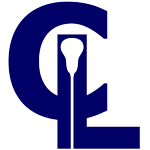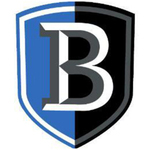Fairfield University
Profile
Size
6 / 10Cost
10 / 10Selectivity
7 / 10-
Team Conference
Colonial Ath. (CAA)
-
College Type
4-year, Private non-profit
-
Campus Type

Suburb: Large
Student Body
Gender
- Male
- Female
Enrollment
- Full Time
- Part Time
Geography
- In-State
- Out-of-state
- Foreign
- Other
Ethnicity
- White
- Black
- Asian
- Latino
- Foreign
- Other
Other includes American Indian, Native Alaskan, Native Hawaiian or other Pacific Islander, two or more races and unknown race / ethnicity.
Coach Recruiting Interview
Division I lacrosse players share a passion for the game and willingness to put the team and its system ahead of personal goals. This common trait is not by coincidence; college coaches look for this during the recruiting process and prioritize team-first players with great attitudes that can elevate the team by performing within the system. Duke lacrosse is a great example of this.
Coach Andy Whitley of Fairfield University echoed this belief during our chat about what young players can do to stand out during the recruiting process and get on the recruiting radar of college coaches.
Andy Whitley is in his sixth season as a member of the men’s coaching staff. Whitley works closely with the Stags’ goalkeepers and faceoff men in addition to playing a leading role in recruiting.
Whitley joined the Fairfield staff in 2009 after serving as an assistant coach with Yale for three seasons.
What advice do you have for players interested in Division I schools?
Players interested in playing lacrosse at the Division I level need to have a combination of attributes. Being excellent lacrosse players is a given, at Fairfield University, we want players that play the game at a high level and also get enjoyment out of being part of the team.
At the end of the day, coaches are paid to win lacrosse games so we want players that are willing to make the commitment both on and off the field. Players are expected to practice with the team 4 hours a day and find the balance between lacrosse and their schoolwork.
What is the best way for players to get on your recruiting radar?
Recruits should look for multiple ways to get the attention of coaches. Coaches have a range of teaching philosophies and playing styles. Reach out to coaches and ask about their style and how your game would fit in. Create a recruiting profile that shows coaches the tournaments and showcases you’re attending as well as any highlight clips you may have. Attending coaches prospect days are a great way to showcase your skills and learn about coaching staff and campus.
What type of player’s do you primarily look for, a raw athlete or refined lacrosse player?
At Fairfield University, we look for well-balanced athletes. Recruiting is an art, not a science, being a great athlete is very important but the name of the game is catching, shooting and putting the ball in the back of the net. As coaches, we believe great athletes can be molded and taught to play lacrosse. The ability to create space on the field with your athletic ability is key to succeeding at the Division I level.
What areas of player development would you recommend players to focus on?
I recommend players focus on field concepts and become students of the game. Learning different styles of play and understanding the system you are playing in is important. At Fairfield, we want guys that are eager to learn new concepts and find their place within our system.
The disparity between Division I teams is very small; one or two players can make or break your team. As mentioned, a great example of this is Duke University. Duke has players capable of great individual achievements but collectively, they have found greater success by committing to the system their coaching staff has put in place. The key is for players to be open to changing their game to fit the system and benefit the team.
How has the accelerated recruiting landscape impacted your approach to recruiting?
The accelerated recruiting landscape means that Fairfield and other mid-major schools (in basketball terms) now recruit four different classes at a time. If a guy is talented enough, we will always find a spot for him on the team. Players who develop or grow into their bodies early in high school usually have a short recruiting process. However, for those whose bodies and skills take longer to develop the process could be finished as late as their senior year. The takeaway is that each player pursues his own recruiting path and there is no one size fits all model.
For example, Tom Lukacovic, a shared relationship of the staff and ConnectLAX, is a player who was lightly recruited early in his high school career but grew and developed into a great lacrosse player late in his junior year. Tom is now an important part of the Fairfield team. Players who may not be heavily recruited early in high school can still be major contributors at the college level by staying active in the process and growing their game.
Great, thanks Coach Whitley. Any final thoughts?
My advice is to not get overly anxious during the recruiting process and feel pressured into a decision. Continue to work on your game and hone your skills. Coaches are always looking for late bloomers and usually keep a few roster spots open for them.
ConnectLAX is a third party recruiting service and not affiliated with or endorsed by Fairfield University or Andrew Whitley.
Team Road Trips
On the road, the team primarily travels to Louisville, KY, Colorado Springs, CO and Ann Arbor, MI. The team also travels around the Tri-state area, including Manhattan and Long Island. Other trips in the past include Amherst, MA, Newark, DE and Worcester MA.
Recruit Commits
2024 | |||
Hometown |
Position(s) | ||
| Andrew Tilton |

|
Kingston, MA | Mid, Faceoff |
| John Flynn |

|
Kings Park, NY | Mid |
2023 | |||
Hometown |
Position(s) | ||
| Hunter Moriarity |

|
Cleveland, OH | Mid, Att |
| Walker Hunter |

|
Oceanport, NJ | Goal |
| Keegan Lynch |

|
Baldwinsville, NY | Att, Mid |
| James Krieg |

|
Port Jefferson Station, NY | Mid |
| John Okupski |

|
Lawrenceville, NJ | Mid |
| Lars Heimlich | Islip, NY | Def | |
2022 | |||
Hometown |
Position(s) | ||
| Jack LaBanca |

|
Sparta, NJ | Mid, Faceoff |
| Jason LaMay, JR |

|
Commack, NY | Mid |
| Kevin Dolan | East Setauket, NY | Mid, Att | |
| Tyler Davide | Lake Ronkonkoma , NY | Def | |
| Harry Griff | Yorktown Heights, NY | Att | |
| Devon Lucky | Hockessin, DE | Att | |
| Jake Gilbert | Westwood, MA | Att | |
| Henry D'Ambrogi | Lewes, DE | Mid | |
| Will Snyder | Huntington Station, NY | Goal | |
| Jason Lamay | Commack, NY | Mid | |
| Jonny Lewis | Merrick, NY | Faceoff | |
2021 | |||
Hometown |
Position(s) | ||
| Owen Hirsch |

|
Lancaster, PA | Goal |
| PJ McGoldrick | West Islip, NY | LSM, Def | |
| Aidan McLane |

|
Westfield , NJ | Att, Mid |
| Chris Adornato | Syracuse, NY | Mid | |
| Josh Demko | Carthage , NY | Mid | |
| James Kapralos |

|
Carle Place, NY | Def |
| Dylan Johannes | Victoria , BC | Att, Mid | |
| Tim Lucky | Hockessin, DE | Faceoff | |
| Christopher DeBellis | Franklin Lakes, NJ | LSM | |
| Rory Thompson | Binghamton, NY | Def | |
| Matthew Rice | Baltimore, MD | Mid | |
2020 | |||
Hometown |
Position(s) | ||
2019 | |||
Hometown |
Position(s) | ||
2018 | |||
Hometown |
Position(s) | ||
2017 | |||
Hometown |
Position(s) | ||
2016 | |||
Hometown |
Position(s) | ||
2015 | |||
Hometown |
Position(s) | ||
Events By Fairfield University Coaches
Location
Team Videos
Where Grads Live
- Greater New York City Area
- Greater Boston Area
- Hartford Connecticut Area
- Washington D.C. Metro Area
- Greater Philadelphia Area
- Greater Chicago Area
- San Francisco Bay Area
- Greater Los Angeles Area
- Providence Rhode Island Area
- Greater Atlanta Area
- Greater Denver Area
- Baltimore Maryland Area
- Miami/Fort Lauderdale Area
- Raleigh-Durham North Carolina Area
- Charlotte North Carolina Area
Where Grads Work
- Sikorsky Aircraft
- PwC
- EY
- Deloitte
- IBM
- GE Capital
- GE
- Morgan Stanley
- Merrill Lynch
- JPMorgan Chase
- Pitney Bowes
- UBS
- Bank of America
- J.P. Morgan
- UnitedHealth Group
What Grads Do
- Sales
- Finance
- Education
- Operations
- Marketing
- Media and Communication
- Entrepreneurship
- Healthcare Services
- Information Technology
- Consulting
- Human Resources
- Research
- Accounting
- Program and Project Management
- Legal
Niche Grades
Overall Experience

Student Life

Professor Rating

Academics

Athletics

Campus

Academics
Test Scores
This range represents the middle half of incoming freshman from the 25th to 75th percentile. The writing component is now optional and no longer reported. Historical writing ranges: 550 - 640 for SAT
This distribution represents incoming freshman test scores and GPA on 4.0 scale.
Admissions
Total |
Male | Female | |
| Applicants | 12,315 | 4,900 | 7,415 |
| % Admitted | 57% | 57% | 57% |
| % Admits That Enroll | 17% | 17% | 16% |
| Incoming Freshman Average GPA | 3.48 (weighted) |
Admission Considerations
Required | Rec. | |
|---|---|---|
| High School GPA | ||
| High School Rank | ||
| High School Transcript | ||
| College Prep Classes | ||
| Recommendations | ||
| Demonstrate Competencies | ||
| Admission Test Scores | ||
| Other Tests (Wonderlic, etc.) | ||
| TOEFL (English proficiency) |
 Admissions office
Admissions office
Majors / Programs
Degrees offered by popularity. Type = Bachelor.
 Athlete graduation rate
Athlete graduation rate
Financial
Net Price
Average net price = sticker price - financial aid.
$39,546
Average net price by income for incoming freshman receiving financial aid.
Net price for all students (private non-profit and for profit institutions).
Sticker Price
Sticker price = estimated total cost of attendance.
Undergraduate | ||
On Campus | ||
| Tuition & Fees | $49,830 | |
| Books & Supplies | $1,150 | |
| Cost of Living | $15,150 | |
| Personal Expenses | $1,730 | |
| Sticker Price | $67,860 | |
Personal expenses includes laundry, transportation, entertainment and furnishings.
Financial Aid
96% of full-time, incoming freshman receive financial aid.
Receiving Aid % | Avg. Aid Amount | |
Type of Aid | ||
| Grant or Scholarship | 94% | $25,777 |
| Federal Grants | 10% | $5,806 |
| Pell Grants | 10% | $4,809 |
| Other Federal | 7% | $1,543 |
| State & Local Grants | 0% | $1,000 |
| Institutional Grants | 94% | $25,134 |
| Student Loans | 54% | $9,272 |
| Federal Loans | 53% | $5,420 |
| Other Loans | 9% | $23,543 |
All financials shown for full-time, incoming freshman.
Total Amount | Per Student | |
Endowment | ||
| Financial Assets | $332 Million | $62,936 |
Value of endowment assets at fiscal year end.
Debt
Total federal debt after graduation for undergrad borrowers: $27,000.
Total cumulative student debt by percentile.
Total Principal | Monthly Payment | |
| 10 Year Repayment | $23,000 | $287 |
Most student loans have a grace period before repayment begins.
3 Year Avg. Default Rate: 1.3%
Avg. rate for colleges with lacrosse is 5.1%.
Total federal debt excludes private student loans and parent PLUS loans. Cumulative debt cohort includes 1,367 students.
Salary
Earnings 10 years after enrollment: $72,100
Earnings of former students working by percentile.
Earnings of former students who received federal financial aid. Figures shown are median.
Payback
How long until this college investment pays off: 4.53 years.
Median debt and foregone earnings divided by median earnings. Foregone earnings assumes 4 years to graduation; at this school, 80% of students graduate on time.
Team Social
Campus Safety
On Campus |
In Res. Halls |
|
|---|---|---|
Criminal Offenses |
||
| Murder | - | - |
| Negligent Manslaughter | - | - |
| Rape | 5 | 5 |
| Fondling | 2 | 2 |
| Incest | - | - |
| Statutory Rape | - | - |
| Robbery | - | - |
| Aggravated Assault | 1 | 1 |
| Burglary | 8 | 7 |
| Motor Vehicle Theft | - | - |
| Arson | - | - |
In Residence Halls are a subset of On Campus statistics. Murder includes non-negligent manslaughter.
The crime data reported by the institutions have not been subjected to independent verification by the U.S. Department of Education. Therefore, the Department cannot vouch for the accuracy of the data reported here. Statistics represent 3-year average data.
Data from The National Center for Education Statistics (NCES), the primary federal entity for collecting and analyzing data related to education.
Carnegie Classifications
Category |
Classification |
|---|---|
| Basic Classification | Master's Colleges & Universities: Larger Programs |
| Undergrad Instruction | Balanced arts & sciences/professions, some graduate coexistence |
| Graduate Instruction | Postbaccalaureate: Comprehensive programs |
| Enrollment Profile | High undergraduate |
| Undergrad Profile | Four-year, full-time, selective, lower transfer-in |
| Size and Setting | Four-year, medium, highly residential |
Carnegie classifications provide a framework for evaluating comparable schools.
Teams In Conference
Similar Academic Schools
-

-

-

-

-

-

-

-

-

-

-

-

-

-

-

-

-

-

-

-

-

-


 See more college grades
See more college grades Free ACT and SAT test prep
Free ACT and SAT test prep Free SAT test prep
Free SAT test prep Free scholarship search
Free scholarship search



